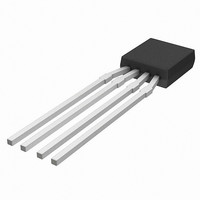KMZ10C,112 NXP Semiconductors, KMZ10C,112 Datasheet - Page 49

KMZ10C,112
Manufacturer Part Number
KMZ10C,112
Description
IC MAGNETIC FIELD SENSOR SOT195
Manufacturer
NXP Semiconductors
Type
Special Purposer
Specifications of KMZ10C,112
Sensing Range
2mV/V
Voltage - Supply
5 V ~ 10 V
Output Type
Analog
Operating Temperature
-40°C ~ 150°C
Package / Case
SOT-195
Mounting Style
SMD/SMT
Maximum Operating Temperature
+ 150 C
Minimum Operating Temperature
- 40 C
Supply Voltage (min)
5 V
Supply Voltage (max)
10 V
Operating Temperature (min)
-40C
Operating Supply Voltage (typ)
5V
Lead Free Status / RoHS Status
Lead free / RoHS Compliant
Current - Supply
-
Current - Output (max)
-
Features
-
Lead Free Status / Rohs Status
Lead free / RoHS Compliant
Other names
933698480112
KMZ10C T/R
KMZ10C T/R
KMZ10C T/R
KMZ10C T/R
Philips Semiconductors
LINEAR POSITION AND PROXIMITY MEASUREMENT
Contents:
Principles and standard set-ups
The sensitivity of magnetoresistive sensors lends itself to
linear position measurement systems, with a number of
possible applications. Simple basic set-ups can be used
for one-point position measurement and a linear position
measurement set-up and can be easily modified to
produce a proximity switch sensor.
The underlying principle is very similar to that used for
angular measurement, in that as a magnet on the target is
moved, the internal magnetization vectors of the permalloy
strips on the sensor change, aligning themselves with the
external magnetic field and thus changing their resistance.
1998 Jun 12
handbook, full pagewidth
Principles and standard set-ups
Position measurement applications
Reference set-ups.
Magnetic field sensors
Fig.56 Sensor output in the field of a permanent magnet.
(a)
(b)
(c)
x
x
y
x
N
49
H y
V O
4
H
When a magnetoresistive sensor is placed in a permanent
magnetic field, generally it is exposed to fields in both the
x- and y-direction. If the magnet is oriented is such a way
that the axis of the auxiliary field in the x-direction is
parallel to the permalloy strips in the sensor, then any
movement in the y-direction can be seen as fluctuations in
the transverse field, which can be equated to the position
of the magnet with respect to the sensor.
The linear region of the sensor’s sinusoidal output is
defined roughly by the length of the magnet. Outside this
area, the axial field produced by the magnet is becomes
weaker and near the poles, it also changes direction, both
of which can cause sensor flipping. (For further information
on sensor flipping, please refer to Appendix 2 and the
Chapter on “Weak field measurements”).
Figure 56 shows one of the simplest arrangements for
using a sensor/magnet combination to measure linear
displacement.
1
S
H x
MBB898
H x
H
x
x
x
General














